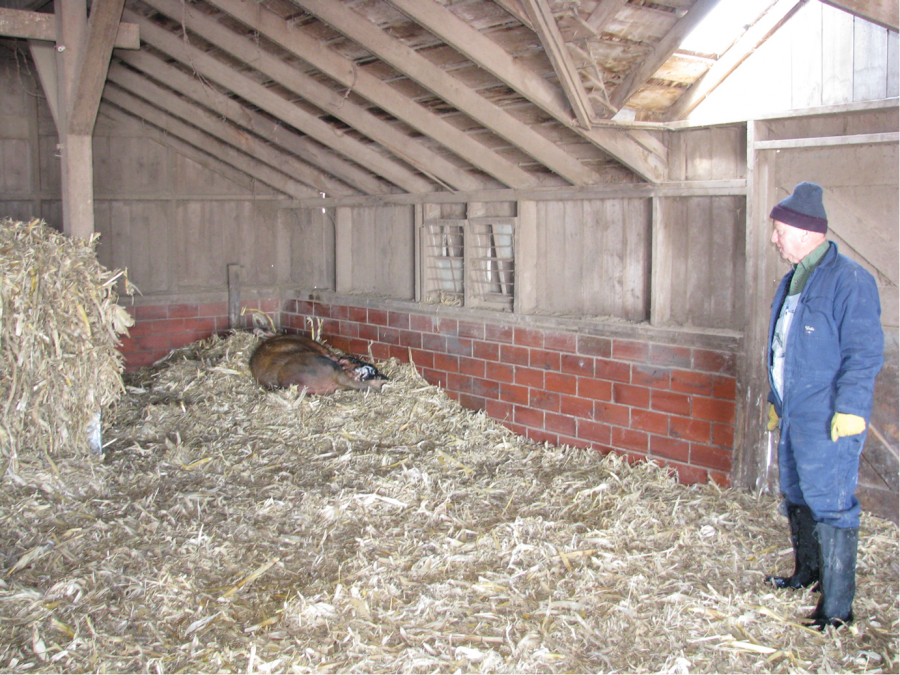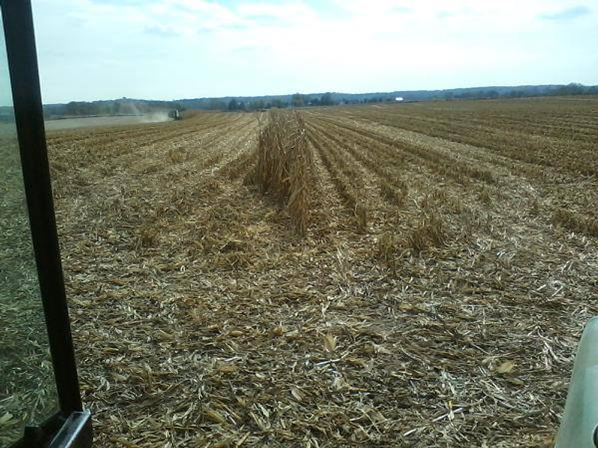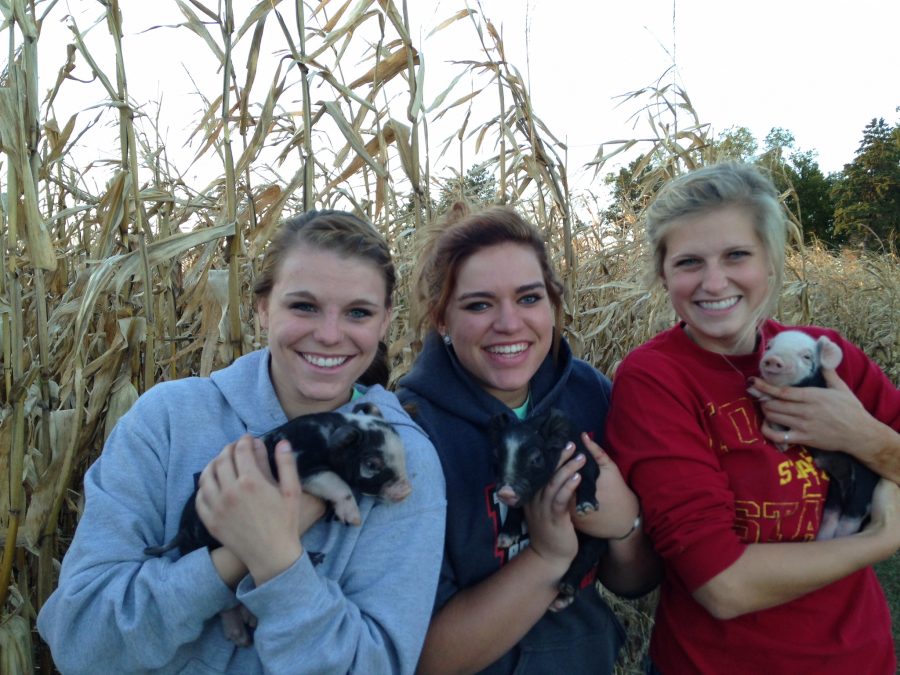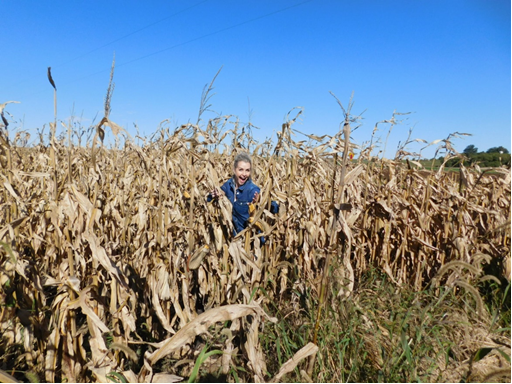Recycling in the Farm Fields
November 9, 2016As the daylight hours shorten, the landscape gradually transforms from the rich greens of summertime into various autumn shades of gold in the farm fields. On the farm, that means one thing: harvest time! On our farm, we mainly grow field corn, soybeans, oats and hay. Some of these we grow organically, whereas others we use more conventional methods.

Sarah’s father, Paul Willis, with some farrowing hogs in the winter.
Farming may seem like a simple endeavor to an untrained eye; planting crops in the spring and harvesting them in the fall. However, there is so much more to it than that. A few years ago I wrote about the importance of utilizing everything grown on the farm including corn stalks, not just as an example of being frugal, but for other reasons as well. Sometimes this involves intricate decisions. Corn stalk bales are a perfect and timely example. Baling our corn harvest’s leftover corn stalks and using them as bedding and supplemental feed for our livestock through the cold winter months sounds like a good idea, but a farmer also has to research whether the effect of removing them from the field will have a positive effect on the soil and our environment. My father would tell you that we have never removed all of the corn stalks from our fields and that we typically would bale every other row.

Corn on the farm during harvest. Notice the stalks left out in the field.
Why is it important to leave anything in the field? Because nothing is more important to farmers than the health of our soil. In the earlier years of farming, soil naturally had more nutrients than most of it does today, which meant we had to work the soil after harvest if we wanted to improve our yields. But as farming has become more about instant gratification, so many farmers now are “mining the soil”. That means we expect more and more yields each year and work and rework the land without a second thought. That isn’t sustainable. The waste leftover from corn harvest is the stalk left behind standing in the field. Leaving the leftover stalks replenishes the soil with much needed organic material as well as serving as a cover crop preventing soil erosion during the harsh winter months.
As humane hog farmers, we use these cornstalk bales for bedding during the cold winter months. Reusing these stalks composted with the winter’s hog manure produces a nutrient dense fertilizer, which we haul and redistribute it onto the fields. We spread this composted manure strategically where it is needed most, on hill tops that are more susceptible to erosion. We apply lesser amounts to the low points where organic material more naturally collects.

Ila and Dan Taylor’s daughter Hannah, in the Red, along with friends from ISU. They came home to visit and help with the pigs.
As traditional farmers, our family farm has been passed down for generations and continues to be the source of our family’s livelihood, which is why it’s so important to take into consideration the health and wellness of its foundation. We think about the soil in every decision we make. While it’s important to recycle it’s also important to know when to leave well enough alone.

Sarah Willis enjoying the corn before harvest.
